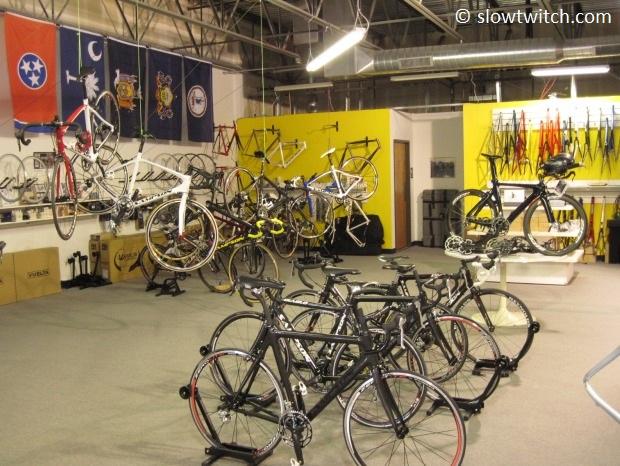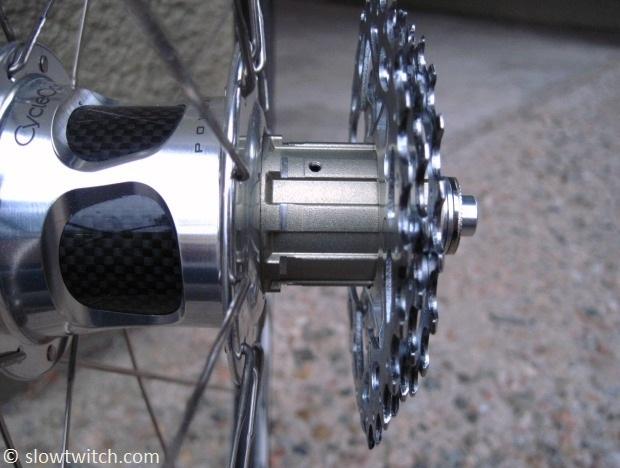Sampson Cassette Review
This is our review of the cassette options from Sampson Sports. We took a look at their US office in 2012, which can be found HERE.
When most people think of cassettes, they think of Shimano, SRAM, and Campagnolo. It makes sense that the drivetrain companies make their own cassettes. Alas, there are other options out there. We have IRD, Wheels Manufacturing, Miche, Mavic, and the subject of this article – Sampson.
What is the advantage of using an off-brand cassette? Usually, it comes down to one of two things: 1) Compatibility, or 2) Price. On the compatibility side of things, IRD was one of the early companies to make wide-range cassettes for odd drivetrains (i.e. for use in the Mt. Washington hill climb). Wheels Manufacturing makes cassettes that allow wheels and drivetrains between Shimano and Campagnolo to place nice together. Sampson offers what they’re billing as equal-to-OE quality at a competitive price. And – at least for the time being – they offer the only low(ish) price option for folks riding 11-speed Dura Ace 9000.
10-Speed steel cassette
This is my 10-speed 11-28 cassette from Sampson:
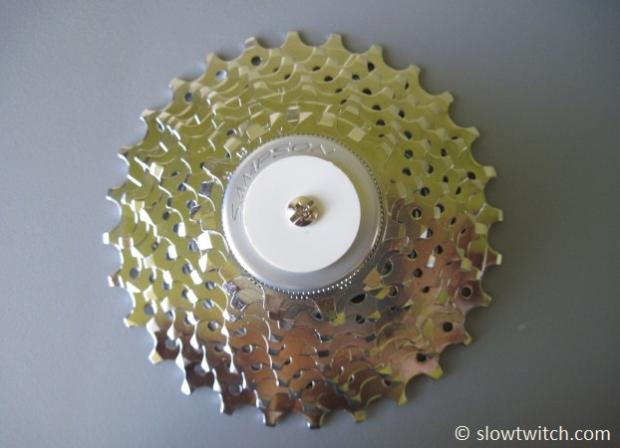
It features steel cogs and aluminum carriers (for the larger cogs). The price is $99, which is equal to Shimano Ultegra 6700. Weight is quoted at 215 grams in 11-25 size, which is about five grams lighter than the same size Shimano cassette. Sampson offers this cassette in 11-23, 11-25, 11-28, and big-biscuit 11-32.
One thing to note about this cassette is that it is for use on Shimano 9/10-style freehubs. Similar to Shimano 10-speed cassettes, you must use the supplied 1mm washer behind the cassette before installing it. I attempted to install this cassette on my Easton EC70SL wheels (which have a Shimano 10-ONLY freehub), and the cassette did not fit. The largest cogs with the alloy carriers fit, but the smaller full-steel cogs did not.
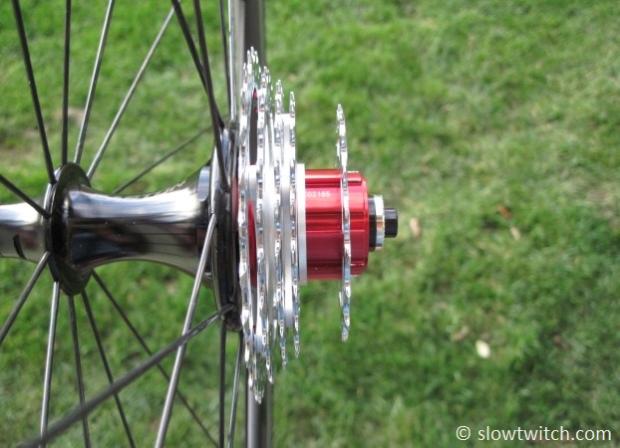
The 10-ONLY freehub is relatively rare these days (more information on this topic is available in the cassette article linked at the bottom of this page), but we thought it was worth noting this incompatibility.
Sampson steel cassettes are unique in that they have specific areas that are textured. According to Eric Sampson, these are intended to improve shift quality and speed:
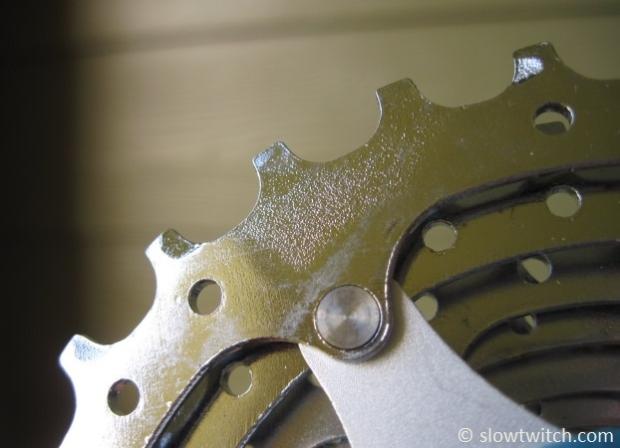
How did the cassette work? In my experience, it worked quite well. I used the cassette for several months on my cyclocross bike, which saw a mix of rain, snow, dust, and everything in between. The cassette seemed to run as quiet and shift as well as my previous Shimano cassette (which is to say, very quiet, and smooth). Over time my shifting did degrade, but it was due to normal chain wear. As soon as I put a new chain on, shifting went back to its original quality. I’m calling it a winner.
11-speed steel cassette
The cassette I really wanted to get my hands on is Sampson’s new steel 11-speed cassette. If you own a Shimano Dura Ace 9000 groupset, your only option in cassettes (that we’re aware of) is Shimano’s own Dura Ace 9000 cassette. They are wonderful cassettes – light, gorgeous, and quiet – but pricey at $350 a pop. Shimano is coming out with 11-speed Ultegra 6800 for next year (with a lower-priced cassette), but you can’t buy it yet. I happen to have a bike with the new 9000, so Eric sent a new 11-speed 11-25 cassette to try.
Overall, it looks almost identical to the 10-speed version:
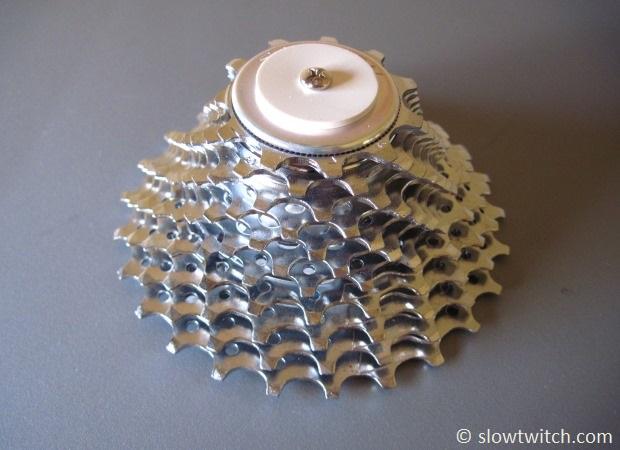
At $129, it costs less than half of Dura Ace. Weight comes in at 233g including lockring. They are currently available in 11-25 and 11-28, with 11-23 slated for July availability.
It has the same aluminum carriers and same textured portions as Sampson 10-speed cassettes. I do like that the carriers only hold two cogs each, making cleaning very easy compared to carriers with three or four cogs.
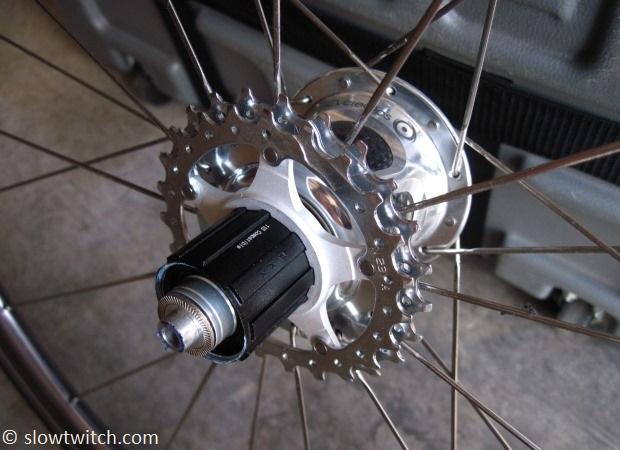
All of you gear weenies can rejoice – the 11-speed 11-25 has a 16-tooth cog.
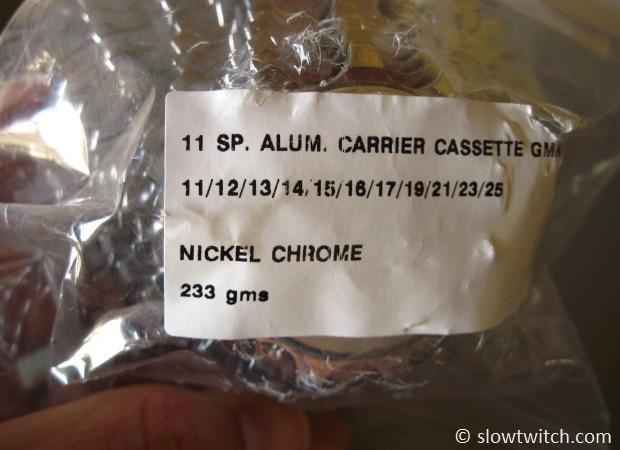
Personally, I really don’t understand the hub-bub about the 16 tooth cog. No offense to our friendly 16, but there’s nothing special about it. I’ve heard people rave about how this is the ‘perfect’ gear. It is just what you need. It is the Golden Gear.
But there’s a problem. I’ve heard that spoken by people on 700c wheels… and 650c wheels (your effective gearing is much different between the two wheel sizes). I’ve heard people talk about the special 16 tooth cog… and they might have a 50/34 crankset, or a 52/36… or even a 53/39. They might be on a cyclocross bike with 32mm tires… or a triathlon bike with 21mm tires. ALL of these things affect your gearing. A 16 tooth cog on your bike with 650c wheels, 170mm cranks, and 23mm tires is completely different than the 16 tooth cog on my bike with 700c wheels, 165mm cranks, and 28mm tires. While I’m not against the 16 tooth cog, per se, I just want to be sure that we all understand that it’s an issue of gearing, and it ain’t all black-and-white.
That being said, the general benefit of more gears in your cassette is that the jump from gear-to-gear is smaller. Here is a side view of the Sampson 11-25:
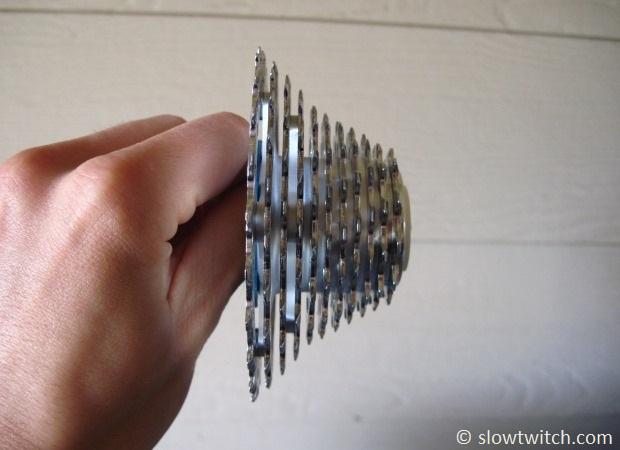
I don’t know about you, but that looks like mighty close gearing to me. 11 speeds make life easier for us weenies who simply must pedal at a perfect cadence all the time.
How was the shifting on our 11-speed cassette? Unfortunately, I think there is still some work yet to be done on this cassette. The shifts that happen do so very well – similar to the 10-speed version. However, getting each shift to execute was the problem. With more gears packed into the same space, the jump from gear-to-gear is smaller. Everything must be more precise.
The behavior that was happening was this – in the smaller cogs, the cable tension seemed effectively too loose. The chain was following a little too close in the direction of the dropout, causing interference and noise between the inner plates of the chain and the cog teeth:
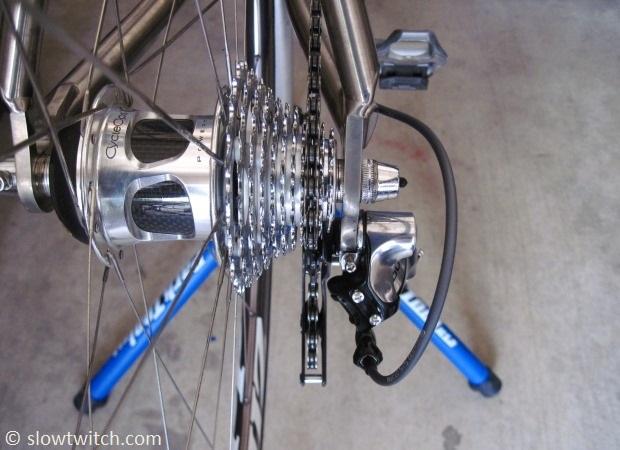
To alleviate this, you can turn the barrel adjuster counter-clockwise. This make the small cogs quiet eliminated any over-shift when going to small cogs. However, when in the larger cogs, the cable tension was effectively too high. Normally this manifests as interference and noise between the chain’s outer plates on the left side, and the right side of the larger cogs. That did happen, but I was also getting significant shift hesitation when shifting down the cassette. I could drop the cable tension, but then I had the old issue in the small cogs.
Most drivetrains suffer from this to a degree, and it is due to a host of things – spring rate, number of springs in the derailleur (and whether that derailleur arcs through its path from small-to-big-cogs), chain width, chain flexibility, pulley design (i.e. floating or not), derailleur hanger design, and so on. There’s a lot going on.
I suspected that the width of the cogs might be greater than those on my Dura Ace 9000 cassette, so I measured them. In fact, the Shimano cogs were wider at about 2.0mm – vs 1.6mm for the Sampson cogs. I think the difference is that Shimano cogs tend to taper off to very sharp points, which seems to make them quieter and smoother in operation.
Whatever the case, the Sampson cassette does get the job done, just not as quietly or quickly as the Dura Ace 9000.
SL Race Cassettes – Discontinued
It is also worth noting that Sampson has unfortunately discontinued their all-aluminum SL Race cassettes. These were available in 10-speed, and featured a lust-worthy gold coating.
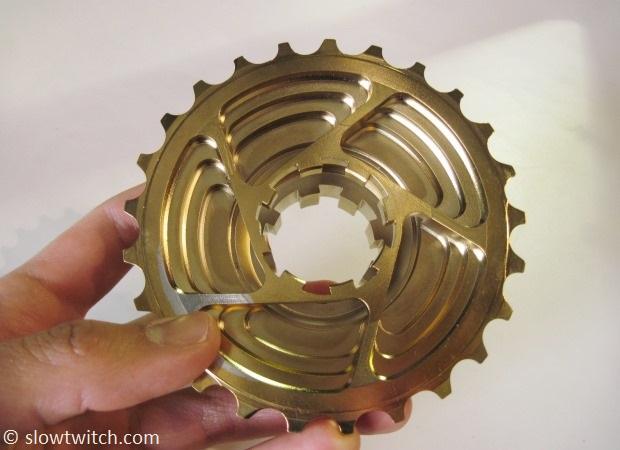
At 88 grams (11-21 size), they blew everything out of the water in terms of weight, but only lasted about 1,500 miles (it is a race product, as the name suggests). Due to low sales volume, Sampson had to pull them from the product line. I have an 11-23 version of this cassette, and am keeping it as a collector's item, or for when I hit peak fitness and really put the hurt on my competitors. So – we'll go with collector's item.
—
All images © Greg Kopecky / slowtwitch.com


